Which Yoga Style Best Fits Your Needs? Learn About 3 Types of Yoga + Their Benefits

With its rising popularity, yoga is gaining new followers. Many join the yoga movement to increase their cardiovascular fitness, but also to increase overall wellbeing.
For the fitness freaks among us, yoga might still appear to be too gentle to challenge them. However, it actually depends greatly on the types of yoga that you practice. Yoga can be a great workout even for the very fit, or it can create a great balance to other high-demand sports and disciplines.
Different yoga styles can be great tools to increase stamina, strength, and body awareness for those looking to increase their overall fitness. Other types of yoga can soothe and relax to relieve stress. And this is only the tip of the iceberg when it comes to what yoga can do for your overall health.
But, how do you know which yoga styles are right for you to practice?
Yoga Styles 101: The 3 Main Types of Yoga and Their Effects on the Autonomic Nervous System
There are uncountable yoga styles these days. All of these styles, however, can be likened to one of the three yoga styles discussed in detail below:
-
- Hatha
- Vinyasa
- Yin
When discussing these three main types of yoga, we mainly distinguish them on the basis of their activity level. And, therefore, their influence on our autonomic nervous system (ANS).
Our ANS governs all involuntary systems of the body (like blood circulation, digestion, hormonal balance, and immune system). It consists of two sub-systems:
-
- The sympathetic nervous system (SNS), which prepares the body for action and stress (“fight-or-flight”)
- The parasympathetic nervous system (PNS), which regulates all regular functions for the growth and healing of the body (“rest-and-regenerate”)
Most yoga styles primarily stimulate either the “rest-and-regenerate” response (PNS) or the “fight-or-flight” response (SNS). Some types of yoga equally stimulate both of these departments of our autonomic nervous system.
So, let’s take a more detailed look at these three main types of yoga and their effects.
The Main Benefits of Hatha Yoga:
Hatha Yoga is the oldest style of these three and is often considered to lie at the foundation of all existing yoga styles today. It is a practice to purify and control the physical body. And as a result of these practices, you also begin to gain control over the mind.
The Hatha Yoga Pradipika, compiled by Swami Svatmarama in the 15th century AD, stresses the importance of asana practice in order to increase bodily health. Swami Svatmarama also talks about how we influence the solar (yang) and lunar (yin) energies in the body in Hatha Yoga, balancing them for increased health and spiritual development.
Learn more about Hatha with A Beginner’s Guide to Hatha Yoga: What You Need To Know About This Practice
Hatha Yoga offers many different benefits:
1. Rebalances Our Autonomic Nervous System
Our nervous system needs both states of activation, the “fight-or-flight” (sympathetic nervous system) as well as the “rest-and-regenerate” (parasympathetic nervous system).
An out-of-balance nervous system is very common in our modern society. Some of us spend most of the time in the excited SNS state, while others are “trapped” in the listless, depressed PNS state.
An out-of-balance nervous system is very common in our modern society.
During a Hatha Yoga practice, we go through a cycle of exercises and postures that accelerate the nervous system and then brake the nervous system again, giving it a thorough workout.
Through alternating challenging asanas with relaxation postures such as Savasana (Corpse Pose), we teach our bodies to easily shift from one state of the nervous system to the other. This results in more inner balance and harmony and improved overall health.
2. Keeps the Spine Young
“You are as young as your spine is flexible” is a common statement in the yoga world. And medical studies are starting to confirm this old wisdom.
In Hatha Yoga, we put great emphasis on moving the spine in a variety of directions. The movement between forward bends and backbends, twists, and lateral stretches massages the intervertebral discs and increases their capacity to absorb nutrients from surrounding tissues.
As a result, long-term practitioners of Hatha Yoga in a study in Taiwan have been found to have significantly healthier and less-degenerated discs than the control group.
3. Increases Overall Stamina and Strength
A traditional Hatha Yoga practice is challenging. It moves your boundaries in terms of stamina, strength, flexibility, and coordination.
In Hatha Yoga, even though there are relaxation postures at regular intervals (which might make it look easy), Sun Salutations, strength-building exercises, inversions, and arm balances create great variety in the practice to increase overall stamina and strength.
Take a Hatha Yoga Class on YA Classes
Feel Good Hatha on YA Classes is a great introduction to the Hatha Yoga practice.
The Main Benefits of Vinyasa Yoga:
The dynamic and often rather vigorous practices of today have origins with the legendary teacher of teachers: Sri Krishnamacharya. He was the teacher of K. Pattabhi Jois, who became a legend in the mid-1970s with the Ashtanga Vinyasa Series.
The Ashtanga Primary Series, in turn, became the blueprint for many Vinyasa and Power Yoga classes. Where the Ashtanga Primary Series is fixed like choreography, there is much more freedom in Vinyasa Flow.
A common element of Vinyasa Yoga is that we aim to move from one posture into another with fluid transitions.
Craving more? Vinyasa Yoga: Here’s an Overview of Everything You Need to Know
Vinyasa Yoga also has many benefits:
1. Improves Stamina by Providing a Cardiovascular Workout
Generally, during a Vinyasa Flow practice, we are in a sympathetic nervous system (SNS) activated state.
As we use our muscles, our breathing and heart rate increase and we train our stamina and cardiovascular system. During Vinyasa, we typically keep a constant and moderate stress on our heart and respiratory system.
There is much more freedom in Vinyasa Flow.
There might be some short phases to catch the breath, but most of the time we keep moving (with our heart rate and breathing rate above resting level).
Therefore, the regular practice of dynamic yoga styles such as Vinyasa will increase your capacity to sustain prolonged physical and mental effort. This basically comes down to increasing your fitness level.
2. Increases Strength in Your Limbs and Core
The active and dynamic nature of a Vinyasa Yoga practice will tone your legs, arms, and core. This is a widely-acclaimed benefit of these more dynamic types of yoga, as they usually include a great variety of Lunges, Warrior Poses, and Chaturanga Dandasanas (yogic push-ups).
The increased core strength can also help to improve your posture and overall body control.
3. Boosts Metabolism
Through the increased muscle tone (as in any conventional exercise), Vinyasa Yoga tends to increase the metabolism of the practitioner, which can result in weight loss.
Take the Introduction to Vinyasa Yoga Program on YA Classes
If you’re ready to explore Vinyasa Yoga, this comprehensive 6-class program lays the foundation for a safe and effective Vinyasa practice.
The Main Benefits of Yin Yoga:
Yin Yoga is a fairly new style of yoga, founded by Paulie Zink in the 1980s. It is a style that focuses on the Yin aspect of Taoism. This style emphasizes more gentle, calming, and supported postures and they are held for an extended period of time (usually around three to five minutes).
The goal is to gently stress the connective tissues in the targeted areas. Unlike Restorative Yoga, Yin Yoga is not necessarily easy.
Yin Yoga also offers many benefits:
1. Increases Flexibility by Releasing Fascia
Deep fascia consists of dense fibrous connective tissue. It surrounds all components of the body: muscles, tendons, ligaments, cartilage, bones, nerves, and blood vessels. There is also fascia that suspends the organs within their cavities and wraps them in layers of connective tissue, which is called visceral fascia.
Yin Yoga stimulates and releases these fasciae and we benefit from a therapeutic effect called myofascial release. Long-stored tensions are released, scar tissue is broken down and released, and muscles learn to relax into their natural state again.
This leads to improved posture, reductions of chronically recurring injuries, and improved joint mobility.
2. Activates the Parasympathetic Nervous System
When our breathing is calm, our muscles relaxed, our heartbeat at a leisurely pace, and our mind stable, our nervous system enters into its “rest-and-regenerate” mode (aka PNS activation).
In this state of the nervous system, the body has time and energy to repair and heal itself, to digest and eliminate properly, and to make sure all systems are in good balance. To be in this state regularly and for prolonged durations is incredibly important to ensure lasting health.
In Yin Yoga, most postures are held steadily for around five minutes.
Due to a busy and hectic lifestyle, many of us are unable to get an appropriate dose of PNS daily and our body (and mind) starts to wear down more quickly and eventually might break down with illness or burnout.
During the long holds in Yin Yoga our heartbeat is slower and we focus on our breath. This calms our minds. We enter a state of PNS activation and allow our body and mind to rest, rejuvenate, and heal.
3. Increases Our Capacity to Deal With Discomfort
In Yin Yoga, most postures are held steadily for around five minutes. What initially feels easy, becomes much more difficult after one or two minutes of hold.
When practicing Yin Yoga, we follow two important principles:
- Do not hold the pose at more than 80% of your capacity. So enter the pose to the fullest and then back out at least 20% and support your body with a block, bolster, or cushion in order to stay in a “Yin zone”
- Do experience discomfort, but no “red” pain. Yin Yoga is not lazy or restorative, even though it is very slow and uses a lot of support. The idea is to place stress on our tissues in order to stimulate and rebalance them. Therefore, during a Yin Yoga class you will be confronted with discomfort and you will learn to endure it, using your breath and mental focus
Try the full Yin Yoga Remedies program on YA Classes
This 6-class program on YA Classes offers a class for each main part of the body.
So, Which Types of Yoga Best Fit Your Fitness Needs?
If you are a fitness freak or follow a certain sports discipline on a competitive level, you might find the most balance from Yin Yoga or gentle Hatha Yoga practices. Or, if you are looking to increase your overall fitness and strength, Vinyasa Yoga might give you the fastest results.
But, if you lead a busy life and want to increase your overall fitness and strength as well as flexibility, Hatha Yoga will give you some yin aspects to relax and some yang energy to workout and get fit. Or you can choose to do both Vinyasa Yoga and Yin Yoga practices together each week.
Keep in mind that all yoga classes depend a lot on the teacher.
However, keep in mind that all yoga classes depend a lot on the teacher who teaches them and how they structure and guide the class. It is possible for a Yin class to be very stressful and a Vinyasa class to be very relaxing and easy.
But the above overview should give you an idea about suitable classes for you. And if time allows, you might even combine styles for extra balance and challenge!
All included information is not intended to treat or diagnose. The views expressed are those of the author and should be attributed solely to the author. For medical questions, please consult your healthcare provider.
You May Also Enjoy
5 Big Benefits of Restorative Yoga (Plus the Motivation You Need to Try It!)
The benefits of restorative yoga are incredible but we often don't practice it because we're too busy. Here are 5 reasons why you definitely should!
Read »
Kalyani Hauswirth-Jain is a senior teacher and Creative Director at the Arhanta Yoga Ashrams since 2013. Born and raised in Switzerland, she has been teaching yoga for over 10 years and training yoga teachers for more than eight years at the Arhanta Yoga Ashrams in India and the Netherlands. She is co-author of the critically acclaimed book Hatha Yoga for Teachers & Practitioners: A Comprehensive Guide to Holistic Sequencing.
Don't Miss These



This Month's Letter
From the Editor
Monthly motivation and food for
thought from our founder.

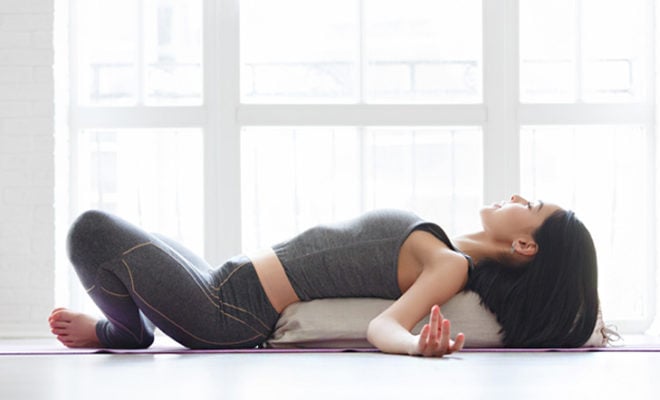


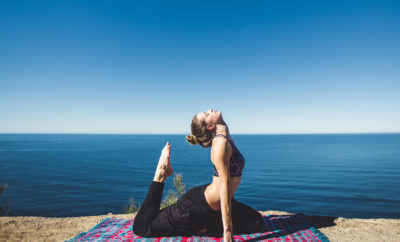
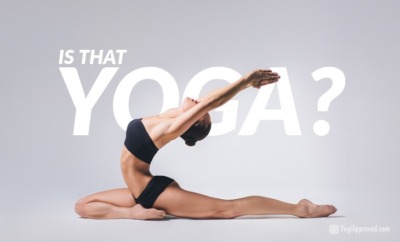

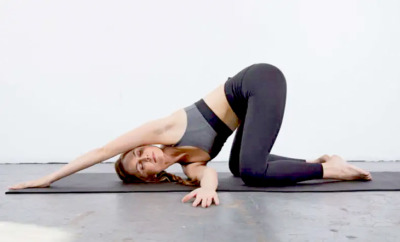





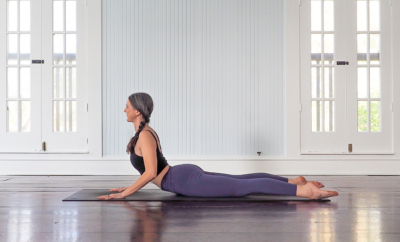
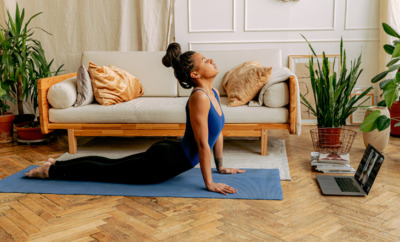














Comments